
Article Summary: Historic Sites In Alabama
Historic Sites In Alabama. More Than Just Parks has 10 incredible must-see sites for you.
I’ve been to so many of these amazing places since retiring from teaching in 2018. Did I mention that I taught history? I spent a lifetime teaching about the history behind these momentous sites. Then I got to see them firsthand. And now I’m sharing the stories of these incredible places with you. It doesn’t get any better than that!
I’m going to give you my list of the 10 Historic Sites In Alabama that you’ll want to see.
To be clear, this list includes national park sites (as in sites managed by the National Park Service) as opposed to national parks. It also includes sites that are not managed by the National Park Service. After all, we’re more than just parks!
If you are planning a trip to Alabama then you might want to pick up a copy of Alabama Bucket List Adventure Guide: Explore 100 Offbeat Destinations You Must Visit!
Without further ado, let’s dive in.
Top 10 Historic Sites In Alabama
Table Of Contents: Historic Sites In Alabama
10. Heart Of Dixie Railroad Museum
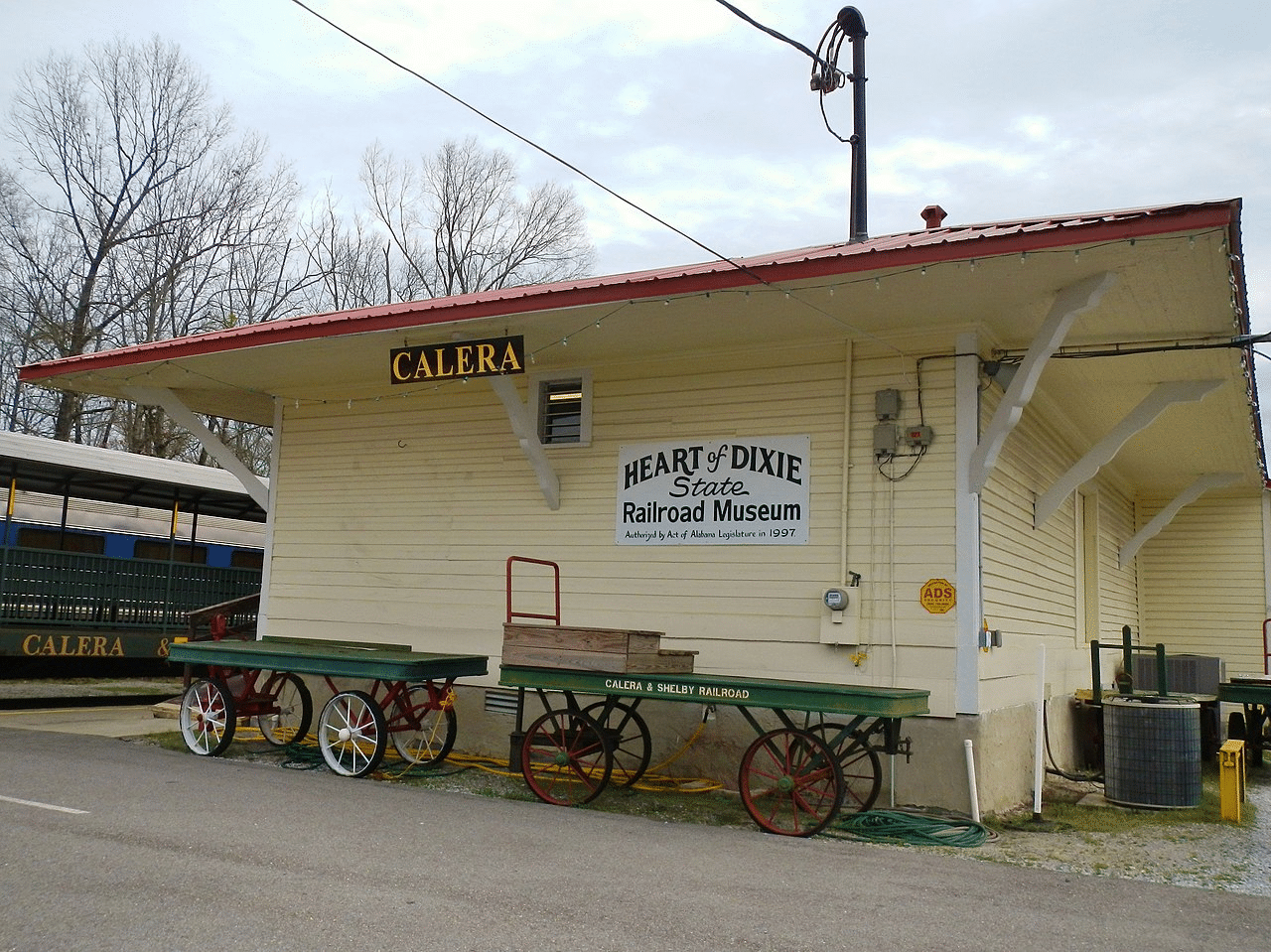
More Than Just Parks goes into the “Heart Of Dixie” with our list of the Top 10 Historic Sites In Alabama. We’ve got a great list for you and we actually kick it off at #10 with the Heart Of Dixie Railroad Museum which seems most appropriate.
The Heart of Dixie Railroad Museum is located in Calera, Alabama. The museum was founded in 1962 and is dedicated to preserving and showcasing the history of railroads in the state of Alabama and the Southeastern United States.
The museum is located on a 65-acre site and features a collection of over 30 historic locomotives and railcars. Visitors to the museum can take a ride on one of the vintage trains, which run on a 10-mile stretch of track between Calera and Shelby, Alabama. The train ride takes passengers through scenic countryside and over the picturesque Cahaba River.
In addition to train rides, the museum also offers a variety of exhibits, educational programs, and events. Visitors can explore the museum’s collection of historic artifacts, photographs, and documents related to the history of railroads in Alabama. The museum also hosts special events throughout the year, such as holiday train rides, train robberies, and other themed events.
The Heart of Dixie Railroad Museum is staffed by a team of knowledgeable and dedicated volunteers who work to preserve and share the history of railroads with visitors of all ages.
Whether you’re a train enthusiast or just looking for a unique and educational experience, the Heart of Dixie Railroad Museum is a must-visit destination in Alabama.
9. Moundville Archaeological Site
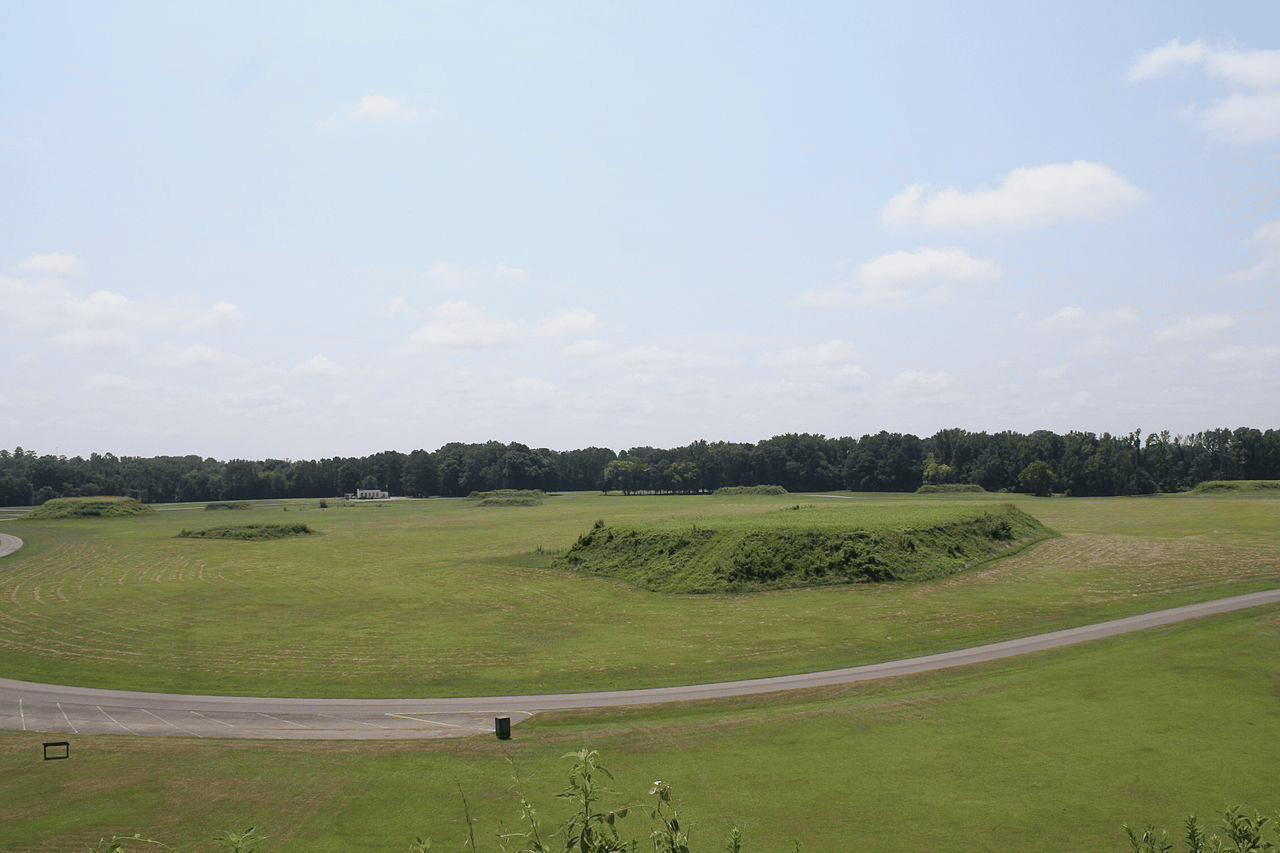
If you like ancient history then you’ll love our next historic site. On our list of the Best Historic Sites In Alabama at #9 is the Moundville Archaeological Site.
It’s an ancient Native American site located in Moundville, Alabama.
The site contains a complex of 29 earthen mounds, which were built by the Mississippian culture between 1000 and 1450 AD. The mounds were used for religious ceremonies, as well as for the burials of important individuals.
The largest mound at the site, called the Temple Mound, is over 60 feet tall. The site also includes a reconstructed prehistoric village, where visitors can learn about the daily lives of the people who built the mounds.
Additionally, the site features an archaeological museum with artifacts and displays that provide insight into the culture and history of the Mississippian people.
The Moundville Archaeological Park is open to the public on certain days of the week, and admission is charged.
8. Barber Vintage Motorsports Museum

We’re moving to a very different site. If you’re someone who enjoys cars and automotive history then this next site is for you. At #8 on our list of the Best Historic Sites In Alabama is the Barber Vintage Motorsports Museum.
It’s a world-renowned museum located in Birmingham, Alabama. The museum is dedicated to showcasing the history of motorcycles and motorsports, with a particular focus on vintage and rare motorcycles.
The museum was founded by George Barber, a motorsports enthusiast and successful businessman, in 1994. It is located on the sprawling Barber Motorsports Park complex, which includes a racetrack, a golf course, and a conference center.
The Museum Include Over 1,600 Motorcycles
The museum itself spans over 144,000 square feet, and features over 1,600 motorcycles, as well as a large collection of race cars, bicycles, and other memorabilia.
The museum’s collection is widely considered to be one of the most extensive and diverse in the world. It includes vintage motorcycles from the early 1900s, as well as rare and exotic models from manufacturers around the world.
Some of the highlights of the collection include a 1913 Thor, a 1925 BMW R37, a 1935 Brough Superior SS100, and a 1951 Vincent Black Lightning – which is considered one of the most valuable motorcycles in the world.
Visitors to the museum can explore the collection on their own or take a guided tour with one of the museum’s knowledgeable staff members. The museum also hosts a variety of special events throughout the year, including motorcycle shows, vintage races, and charity events.
7. Hanks Williams Museum

In compiling our list of the Best Historic Sites In Alabama we haven’t forgotten about music lovers. At #7 we celebrate one of the legends of Country-Western Music. It’s the Hanks Williams Museum.
It’s dedicated to the life and career of country music legend Hank Williams. The museum is located in downtown Montgomery and contains a collection of artifacts, memorabilia, and personal items that belonged to Williams.
The museum features exhibits on Williams’ childhood, his early career in country music, and his rise to fame as one of the most popular and influential country music singers of all time. Visitors can see personal items such as his cowboy hats, suits, and guitars, as well as handwritten lyrics, photographs, and other memorabilia.
One of the highlights of the museum is the 1952 Cadillac that Williams was riding in when he died on New Year’s Day in 1953. The car has been restored and is on display, along with other items related to his tragic death at the age of 29.
The museum also features a gift shop where visitors can purchase souvenirs, books, and recordings of Williams’ music. There is also a small theater where visitors can watch films and documentaries about Williams and his music.
6. USS Alabama
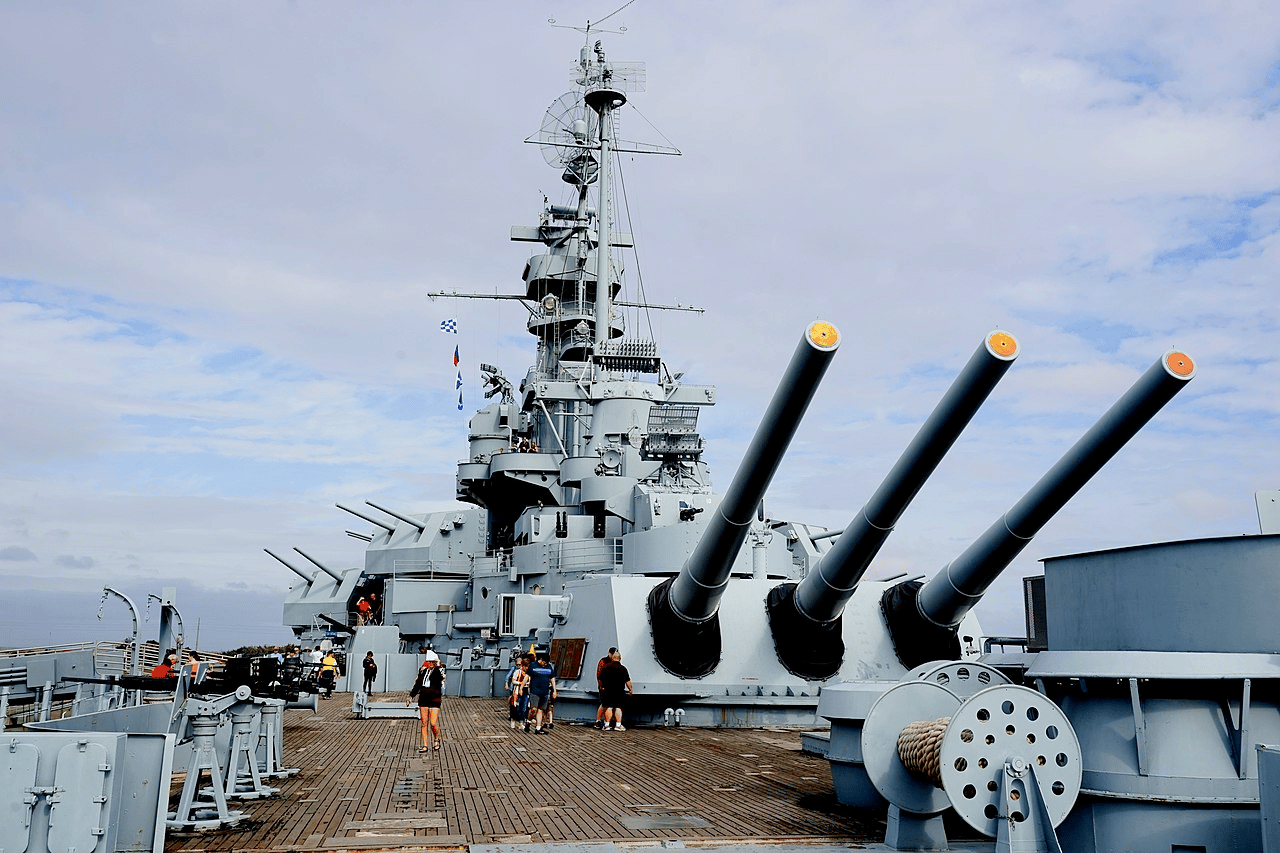
One of the wonderful things about the historic sites in Alabama is that you can find almost any period of American history that you may be looking for.
If you’re someone who’s fascinated by the history of the Second World War – especially the war at sea – then you’ll enjoy our next site. At #6 on our list of the Best Historic Sites In Alabama is the USS Alabama.
The USS Alabama (BB-60) is a World War II-era battleship which served in the Pacific Theater during the war.
Commissioned in 1942, the ship was part of the United States Navy’s fleet of battleships, and saw action in over 26 engagements with the Japanese.
The ship is one of two remaining ships from this fleet, the other one being USS Iowa.
The ship was decommissioned in 1947 and later donated to the state of Alabama, where it is now a museum ship and popular tourist attraction, docked in Mobile Bay, Alabama.
Visitors can tour the ship and learn about its history, including the role it played in World War II and the lives of the sailors who served on board.
Top 5 Historic Sites In Alabama
5. Tuskegee Institute National Historic Site

We’re on to the Top 5 Historic Sites In Alabama. For the final 5 sites, the history which predominates is from the era of the Civil Rights Movement. If you’re familiar with American history then you know that the state of Alabama was ground zero for the important battles that were waged for racial equality and social justice.
It is therefore fitting that we begin our tour of the final five sites which a place which celebrates African-American education. At #5 we have the Tuskegee Institute National Historic Site.
The Problem Of The 20th Century & The Tuskegee Institute
In 1903, W. E. B. Du Bois prophetically stated: “The problem of the twentieth century is the problem of the color line.” In Alabama, you’ll learn firsthand about the struggle for racial equality as the state offers its visitors some amazing historical sites which tell this very important story.
On July 4, 1881, The Tuskegee Institute was founded by Booker T. Washington. It began operations as the Normal School for Colored Teachers at Tuskegee in 1881.
Washington believed the best form of education for his students—initially all future teachers themselves—would be practical skills. The school focused on modern farming methods, construction, carpentry, bricklaying, domestic service, and other industrial subjects.
The Institute was instrumental in building the first black Veterans Administration hospital and in the creation of what would become known as the Tuskegee Airmen.
In 1974, the Congress authorized the creation of Tuskegee Institute National Historic Site. Tuskegee University is the only college that is part of the National Park system. In 1985, the school became Tuskegee University.
Things To Do At The Tuskegee Institute National Historic Site
I only wish I had had the funds to take my students to this incredible place when I was teaching them about the historical experiences of African-Americans.
The George Washington Carver Museum is a place where you can learn about one extraordinary African-American. It’s open to the public. It features exhibits, interpretive programs, and a bookstore.
The “Oaks” is the home of George Washington Carver. You can take free ranger-guided tours of his historic home.
Visitors are also free to explore the historic campus of the Tuskegee Institute.
A map of the District and limited campus tours are available from the Carver Museum.

CHECK OUT: 20 BEST Black History Sites In America For You To Visit
4. Freedom Riders National Monument
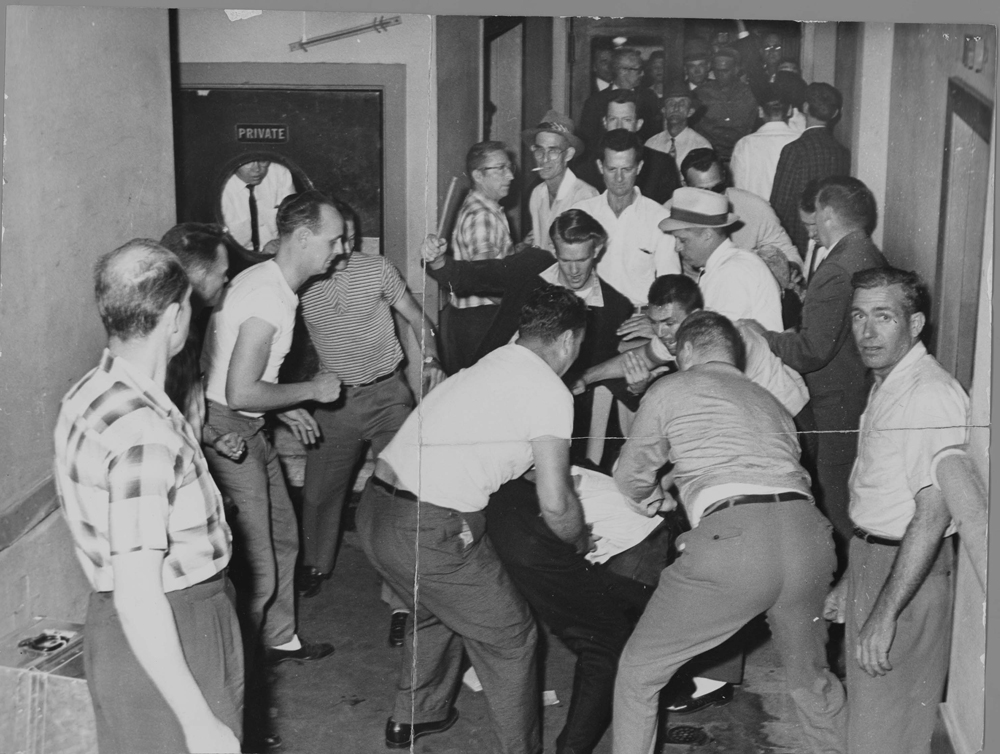
As Alabama was at the forefront of the historic battle for Civil Rights in America, our final four sites feature this struggle with some amazing places for you to visit. At #4 on our list of the Best Historic Sites In Alabama is the Freedom Riders National Monument.
The Freedom Riders were among the first of more than 400 volunteers who traveled throughout the South on regularly scheduled buses for seven months in 1961.
Their mission was to test a 1960 Supreme Court decision that declared segregated facilities for interstate passengers illegal.
The Freedom Riders were organized and led by the Congress of Racial Equality’s (Core) Executive Director James Farmer.
A dozen activists were paired into two interracial sets of Freedom Riders. They traveled on Greyhound and Trailways buses, respectively, from Washington D.C. to New Orleans, LA.
Met By A Mob In Anniston, Alabama
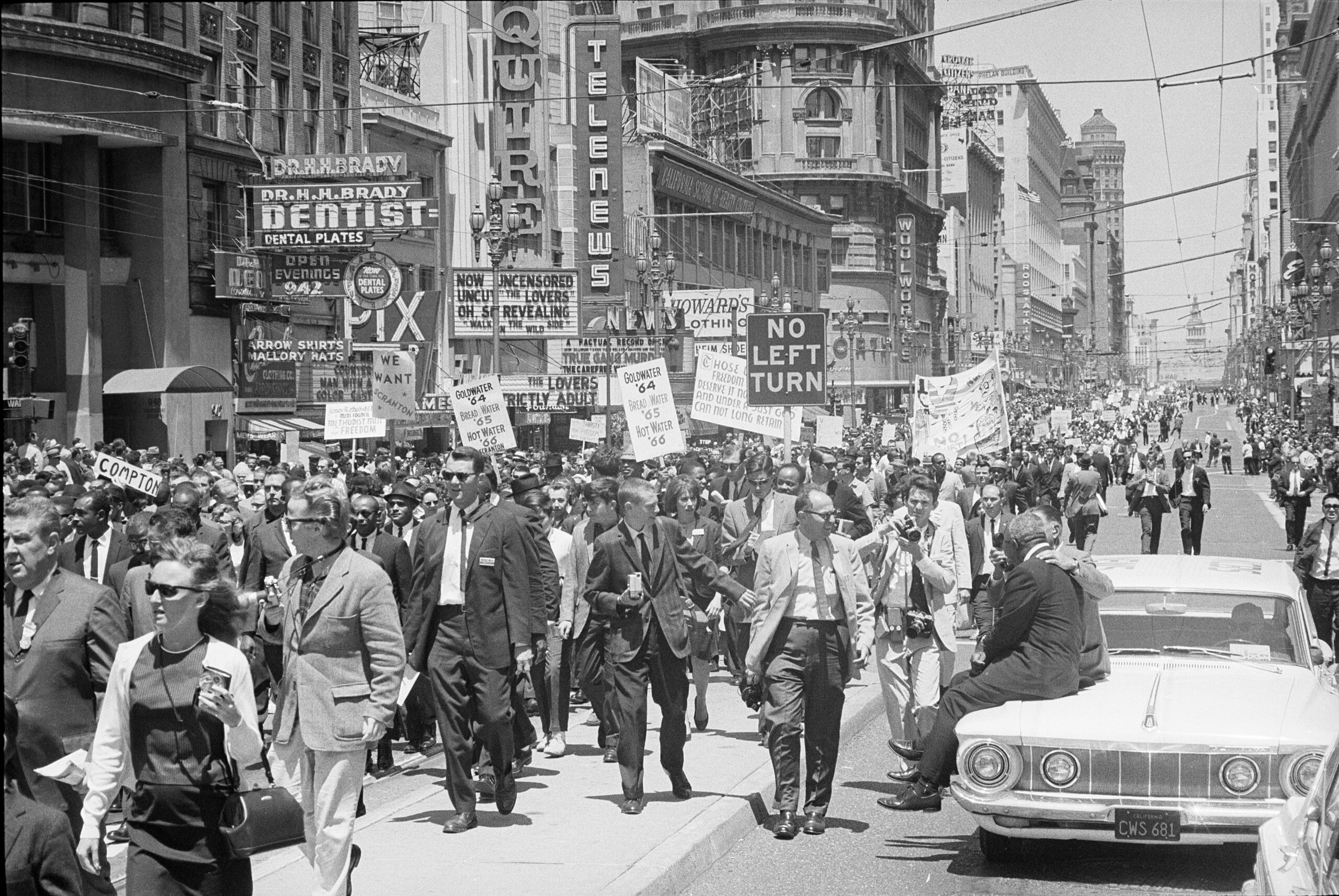
The Freedom Riders journey proceeded without incident until they reached Anniston, Alabama. There they were met by an angry mob whose members threw rocks and slashed the bus’s tires. The white supremacists then firebombed the vehicle.
A different group of the Freedom Riders traveled to Montgomery, Alabama, where another angry mob of men, women and children carrying baseball bats, tire irons and bricks met them at the terminal.
They attacked Student Nonviolent Coordinating Committee (SNCC) activists John Lewis and Jim Zwerg who both sustained severe injuries.
Explore Freedom Riders National Monument

The Freedom Riders National Monument includes the former Greyhound Bus Station located at 1031 Gurnee Avenue. It also includes the place where the bus was firebombed.
It’s about six miles outside of the town on State Route 202, two sites where the Freedom Riders were attacked by segregationist mobs.
3. Tuskegee Airmen National Historic Site
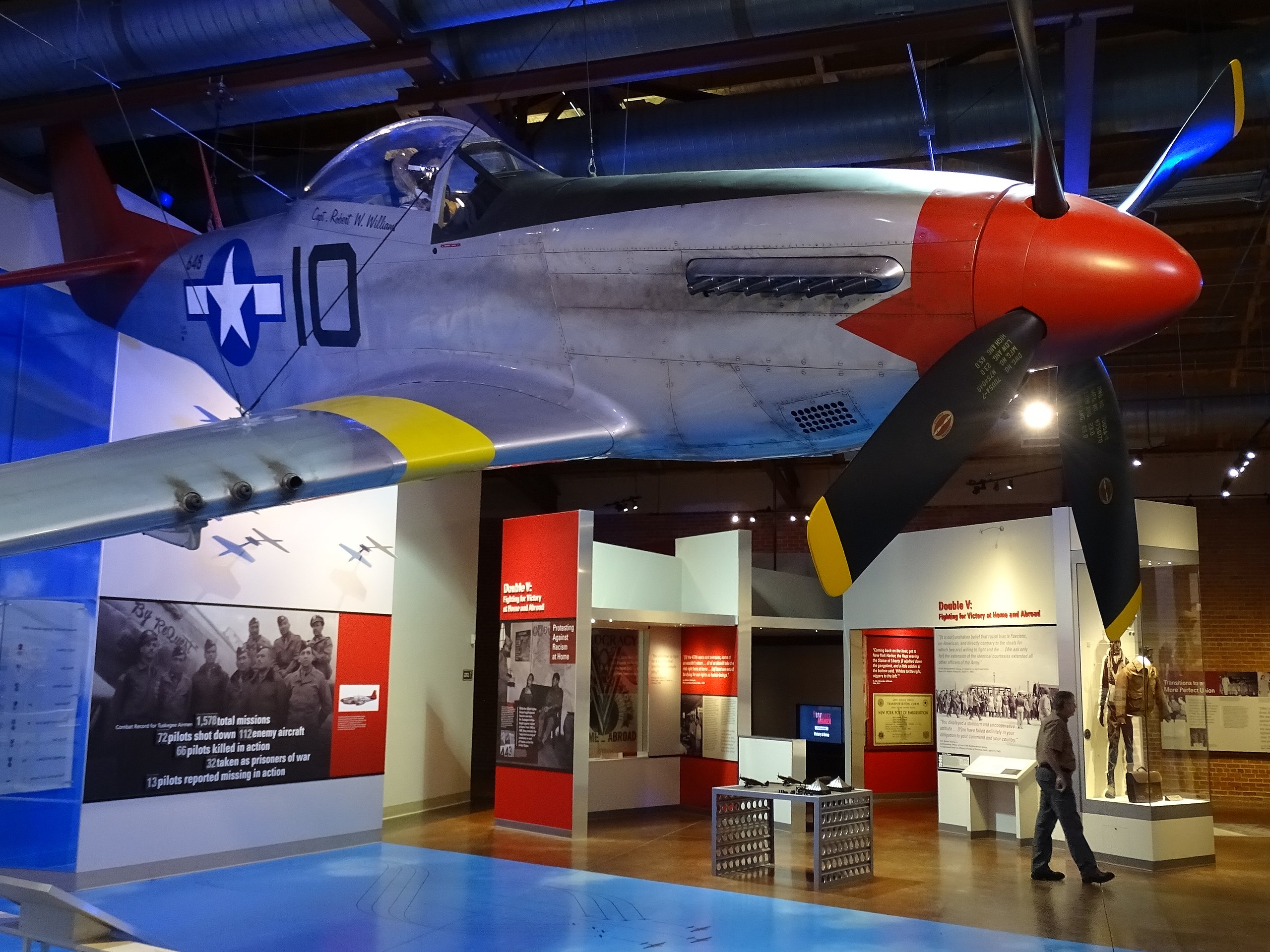
Jackie Robinson proved that there was nothing a white man could do in the major leagues that a black man couldn’t. Most people know his story.
At our next site, however, you have the opportunity to learn the story of a group of forgotten Americans who demonstrated that African Americans could do anything in the air that white pilots could do. At #3 is the Tuskegee Airmen National Historic Site.
It’s the story of an extraordinary group of African American pilots who gave their all in defense of their country as well or better than their white counterparts.
African Americans had to fight the prejudices of their fellow countrymen before they could take up arms against the enemies of America.
It was a Howard University student who initially lodged a lawsuit in protest. His efforts in conjunction with mounting pressure from the black press and the NAACP persuaded President Franklin D. Roosevelt and his wife Eleanor to give African Americans the opportunity to fly combat missions in World War Two.
It All Began In Tuskegee, Alabama
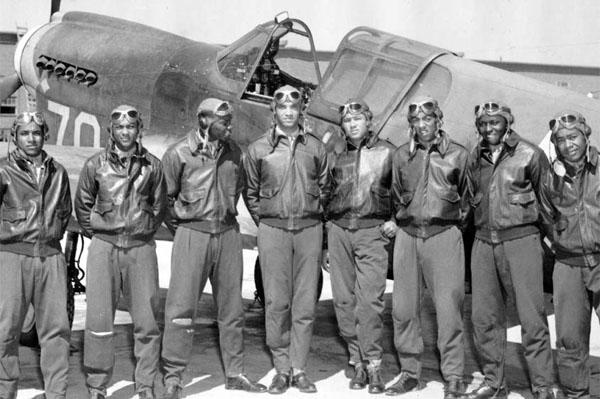
Initially, Tuskegee produced twelve cadets and one officer, Captain Benjamin O. Davis, Jr. Davis went on to become the Air Force’s first African American general.
These men and their commander formed the 99th Pursuit Squadron.
The 99th fought with in the Mediterranean Theater. Three new Tuskegee squadrons joined them to form the 332nd Fighter Group. The 332nd distinguished itself in Italy, flying combat missions and escorting bombers.
Just how good were they? These pilots shot down 409 German aircraft, destroyed 950 units of ground transportation and sank a destroyer with machine guns alone — a unique accomplishment.
Their most distinctive achievement, however, was that not one friendly bomber was lost to enemy aircraft during their 2000 escort missions. No other fighter group which undertook a comparable number of missions can make the same claim.
Who needs Marvel Superheroes when you’ve got these guys!
Discover One Of Our Nation’s Proudest Chapters At The Tuskegee Airmen National Historic Site
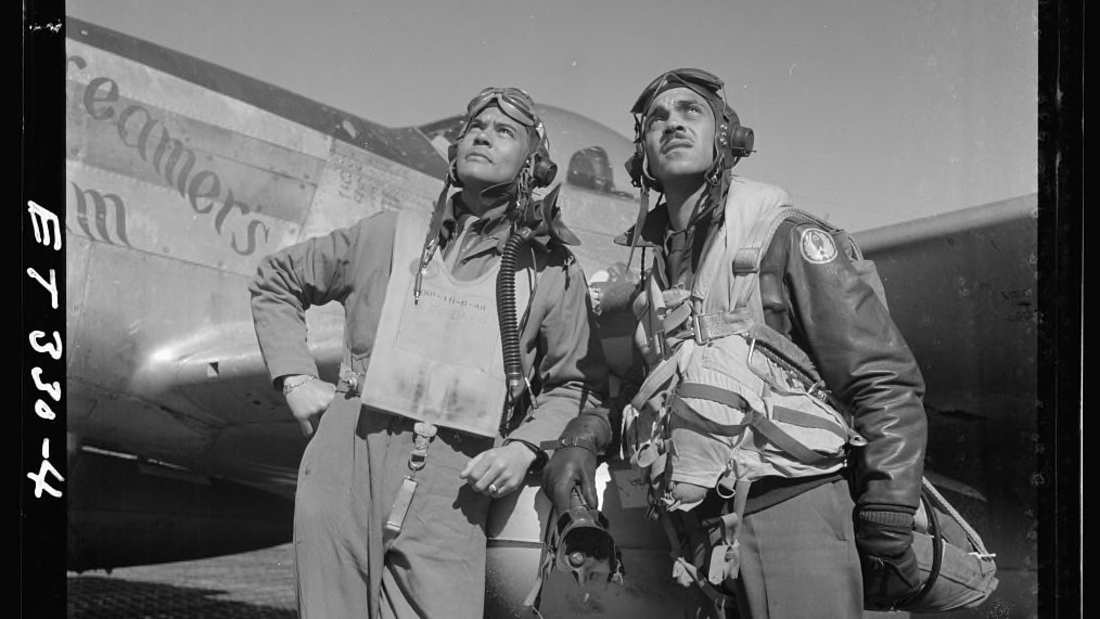
When you arrive at the Tuskegee Airmen National Historic Site in Tuskegee, Alabama, you should begin your visit by watching the 28-minute film which recounts the story of the first African American military aviators in the U.S. Armed Forces.
After seeing the film tour the outside grounds, visit the museum inside hangars 1 & 2, explore the park store and soak up what is an incredibly moving experience.
These men are heroes in every sense of the word. Anyone who has the opportunity should travel to the Tuskegee Airmen National Historic Site in Tuskegee, Alabama.
CHECK OUT: 15 MUST-SEE HISTORIC SITES IN GEORGIA
Fascinating Facts About The Tuskegee Airmen
- No one actually called them the Tuskegee Airmen during World War Two. This name was coined by author Charles E. Francis in the title of his 1955 book, The Tuskegee Airmen.
- Eleanor Roosevelt visited Tuskegee. At her request, Charles A. Anderson, a pilot known as “the father of Black aviation, took her on an aerial tour. The resulting news photograph of Roosevelt and Anderson showed the world that Black Americans were fit to fly aircraft.
- The first three African American generals in the U.S. Air Force were Tuskegee Airmen. They were Benjamin O. Davis, Daniel “Chappie” James, Jr. and Lucius Theus.
- In 2007, the Tuskegee Airmen were awarded the Congressional Gold Medal. This is the highest civilian award bestowed by the United States Congress. It was given to the airmen, including military and civilian support staff, for their “unique military record that inspired revolutionary reform in the armed forces.”
Things To Do At The Site
When planning your visit to the Tuskegee Airmen National Historic Site plan to spend from 1-3 hours. You can:
- Visit the museum: The museum at the Tuskegee Airmen National Historic Site is filled with exhibits and artifacts that tell the story of the Tuskegee Airmen. You can learn about their training, their combat missions, and their impact on American history.
- Take a guided tour: The park rangers at the Tuskegee Airmen National Historic Site offer guided tours of the museum and the surrounding area. The tours provide in-depth information about the history of the Tuskegee Airmen and their contributions to the war effort.
- Watch the documentary film: The site also features a documentary film about the Tuskegee Airmen. The film tells the story of the Airmen through interviews with surviving members of the group and historical footage.
- Explore the airfield: The Tuskegee Airmen National Historic Site includes the historic airfield where the Airmen trained. You can take a walk around the airfield and see the hangars and other historic buildings.
- Attend a special event: The site hosts a variety of special events throughout the year, including lectures, living history demonstrations, and commemorative ceremonies. Check the park’s website for a schedule of upcoming events.
- Hike the nature trail: The site also features a nature trail that winds through the woods and along the banks of the nearby Moton Field. The trail offers a peaceful and scenic setting for a relaxing walk or hike.
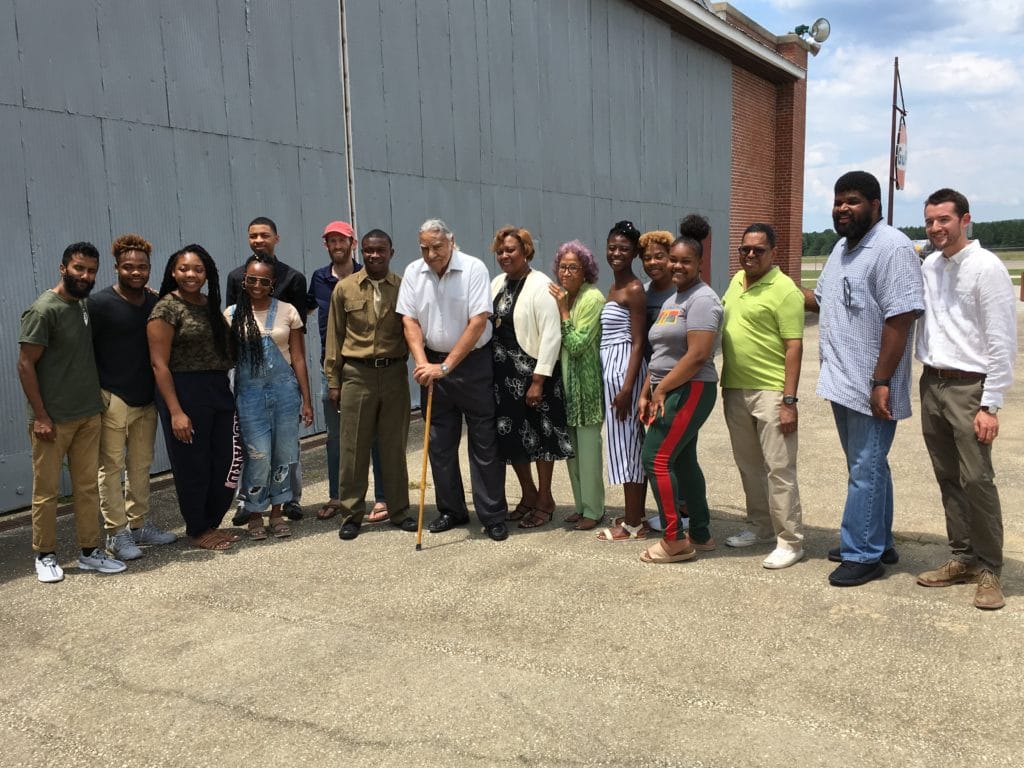
2. Selma To Montgomery National Historic Trail

We’re down to our final 2 historic sites. And, we’ve definitely saved the best for last. In the runner-up position is a site which is synonymous with one of the most important and bloodiest events of the Civil Rights Era. At #2 we have the Selma To Montgomery National Historic Trail.
Bloody Sunday
Bloody Sunday was a violent confrontation that occurred on March 7, 1965, in Selma, Alabama, during the Civil Rights Movement. It was a pivotal moment in the movement’s struggle for voting rights for African Americans.
On that day, a group of around 600 protesters, including civil rights activists and local residents, attempted to march from Selma to Montgomery, the state capital, in support of voting rights for African Americans. They were met by state troopers and local police who were armed with clubs, tear gas, and horses.
As the peaceful demonstrators crossed the Edmund Pettus Bridge in Selma, they were ordered to disperse, but when they refused, the police and troopers attacked them with force. The officers charged the protesters on horseback and used tear gas, whips, and clubs to beat them.
Many Protestors Were Injured
Many protesters were injured, including future Congressman John Lewis, who suffered a skull fracture. The violent confrontation was broadcast on national television and shocked the nation, leading to increased support for the civil rights movement.
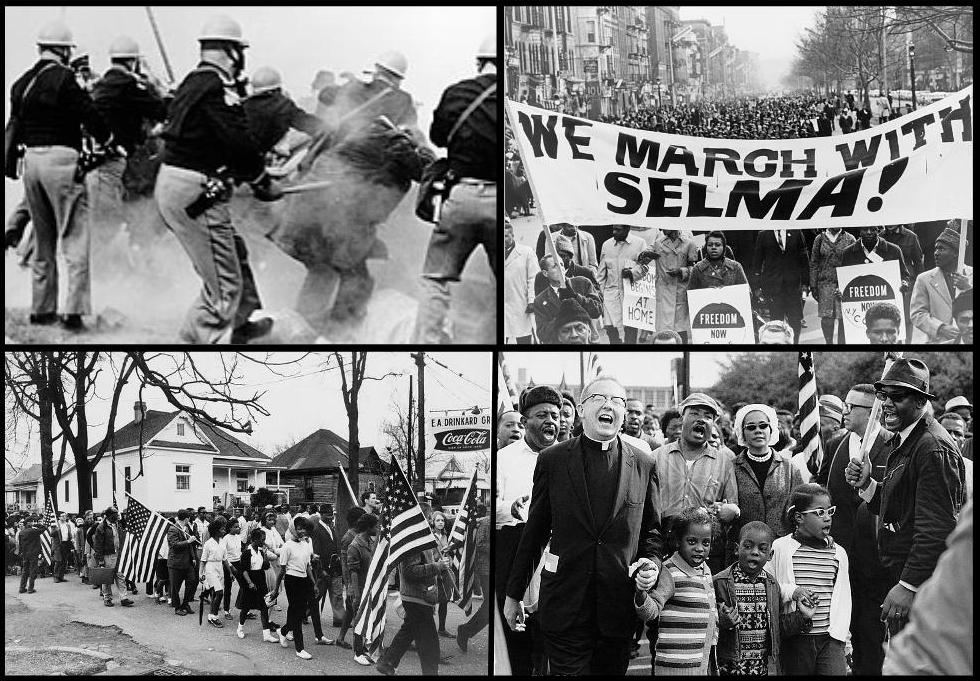
Top right: Marchers carrying banner “We march with Selma!” on street in Harlem, New York City, New York in 1965
Bottom left: Participants in the Selma to Montgomery march in Alabama during 1965 Bottom right: Dr. Martin Luther King, Dr. Ralph David Abernathy, their families, and others leading the Selma to Montgomery march in 1965 (Courtesy of Wikimedia Commons)
The events of Bloody Sunday prompted a second march from Selma to Montgomery, led by Martin Luther King Jr. and other civil rights leaders, which resulted in the passage of the Voting Rights Act of 1965, which prohibited racial discrimination in voting.

“The ultimate measure of a man is not where he stands in moments of comfort and convenience, but where he stands at times of challenge and controversy. The true neighbor will risk his position, his prestige, and even his life for the welfare of others.”
-dr. martin luther king, jr.
Retrace The Footsteps Of Progress Along The Selma To Montgomery Trail
The Selma To Montgomery National Historic Trail celebrates the courageous actions of the Civil Rights protesters who helped to bring about a new birth of freedom.
Visitors are encouraged to drive the same route taken by Dr. King and thousands of his followers. Along the way, stop off at the Selma Interpretive Center serves as the Welcome Center to the trail located at the foot of the Edmund Pettus Bridge. The Interpretive Center offers an interpretive exhibit and bookstore.
Other points of historical interest while in Selma include: Brown Chapel A.M.E. Church, First Baptist Church, George Washington Carver Homes and wayside exhibits.
You can also visit the National Voting Rights Museum & Park (privately owned), Slavery & Civil War Museum, Old Depot Museum, Smitherman Museum and, of course, the Edmund Pettus Bridge.
Once you get to Montgomery, there’s the Rosa Parks Museum, Dexter Avenue King Memorial Baptist Church, Alabama State Capitol and the Southern Law Poverty Center. So much history, so many amazing places. So, what are you waiting for?

1. Birmingham Civil Rights National Monument

When you come to Alabama you can visit the incredible historic sites which commemorate our nation’s long march towards freedom. As the #1 Historic Site In Alabama, More Than Just Parks selected the Birmingham Civil Rights National Monument.
The Birmingham Civil Rights National Monument was established on January 12, 2017, by President Barack Obama. The monument is dedicated to preserving and telling the story of the city’s important role in the Civil Rights Movement of the 1950s and 1960s.
Birmingham was a major center of civil rights activism during this period, with many demonstrations and protests taking place in the city. The monument commemorates several key sites associated with the movement in Birmingham, including the 16th Street Baptist Church, Kelly Ingram Park, the A.G. Gaston Motel, and the Birmingham Civil Rights Institute.
Visit The Sites Which Played A Pivotal Role In The Struggle For Civil Rights & Racial Justice
The 16th Street Baptist Church was the site of a bombing on September 15, 1963, in which four young African American girls were killed. The bombing was a turning point in the Civil Rights Movement, and it brought increased attention to the struggle for racial justice in Birmingham and across the country.
Kelly Ingram Park was the site of numerous protests and demonstrations during the Civil Rights Movement. The park features a number of sculptures and monuments that commemorate the movement, including the “Four Spirits” sculpture that honors the four girls killed in the bombing.
The A.G. Gaston Motel was a key meeting place for civil rights leaders during the movement, and it was where Martin Luther King Jr. and other leaders stayed during their visits to Birmingham.
The Birmingham Civil Rights Institute is a museum that explores the history of the Civil Rights Movement in Birmingham and the broader struggle for racial justice in the United States. It features exhibits and artifacts that tell the stories of the people and events that shaped the movement.
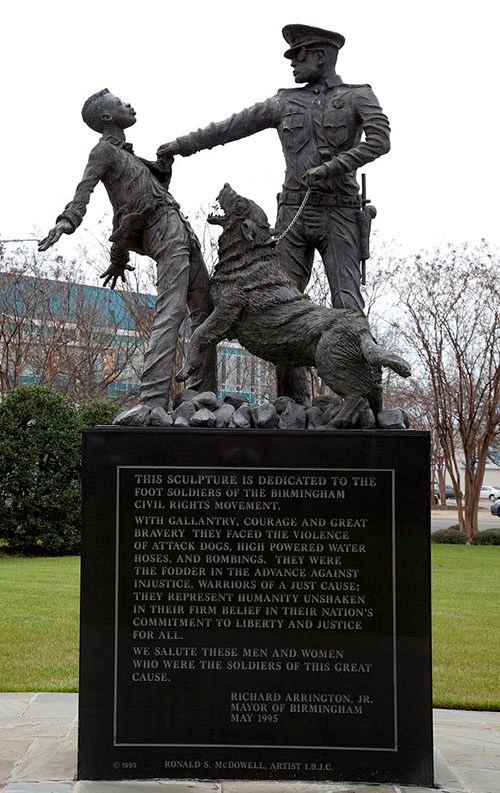
CHECK OUT: 25 BUCKET-LIST FAMOUS LANDMARKS IN AMERICA (MUST-SEE)
List Of Historic Sites In Alabama
- Birmingham Civil Rights National Monument
- Selma To Montgomery National Historic Trail
- Tuskegee Airmen National Historic Site
- Freedom Riders National Monument
- Tuskegee Institute National Historic Site
- USS Alabama
- Hanks Williams Museum
- Barber Vintage Motorsports Museum
- Moundville Archaeological Site
- Heart Of Dixie Railroad Museum
Why Trust Us About Historic Sites In Alabama?
We’re Jim Pattiz and Will Pattiz, collectively known as the Pattiz Brothers and we absolutely LOVE the national parks.
You should probably know that we don’t just make this stuff up out of thin air. We’ve spent our entire adult lives exploring and filming America’s national parks and public lands.
We’ve worked with the National Park Service, the Department of Interior, USDA, U.S. Forest Service, and more for years creating films on important places and issues. Our work has been featured in leading publications all over the world and even some people outside of our immediate family call us experts on the national parks.
And, in 2018, our father – having spent a lifetime teaching history – joined us so that he could help us to tell the stories behind these amazing places.
Meet The Parks Brothers
We Hope You’ll Follow Our Journey

Our goal here at More Than Just Parks is to share the beauty of America’s national parks and public lands through stunning short films in an effort to get Americans and the world to see the true value in land conservation.
We hope you’ll follow our journey through the parks and help us to keep them the incredible places that they are. If you’re interested in joining the adventure then sign up below!
Related Links
What It A National Park? To learn more about the difference between the various National Park Service designations check out our article that explains everything!
Alabama National Parks: 11 BEAUTIFUL Alabama National Parks
To Learn More Check Out These Books
- Parting the Waters : America in the King Years 1954-63 by Taylor Branch.
- Pillar of Fire : America in the King Years 1963-65 by Taylor Branch.
- At Canaan’s Edge: America in the King Years 1965-68 by Taylor Branch.
- The Tuskegee Airmen: The History and Legacy of America’s First Black Fighter Pilots in World War II by Charles Rivers Editors.
- The Autobiography of Martin Luther King, Jr. by Claborne Carson.
- Benjamin O. Davis, Jr. American: An Autobiography by Benjamin O. Davis, Jr.
- A Testament of Hope: The Essential Writings and Speeches of Martin Luther King, Jr.
- Three African-American Classics: Up from Slavery, The Souls of Black Folk and Narrative of the Life of Frederick Douglass by Booker T. Washington, W.E.B. DuBois & Frederick Douglass.
- Why We Can’t Wait by Dr. Martin Luther King, Jr.
- Where Do We Go from Here: Chaos or Community? by Dr. Martin Luther King, Jr.

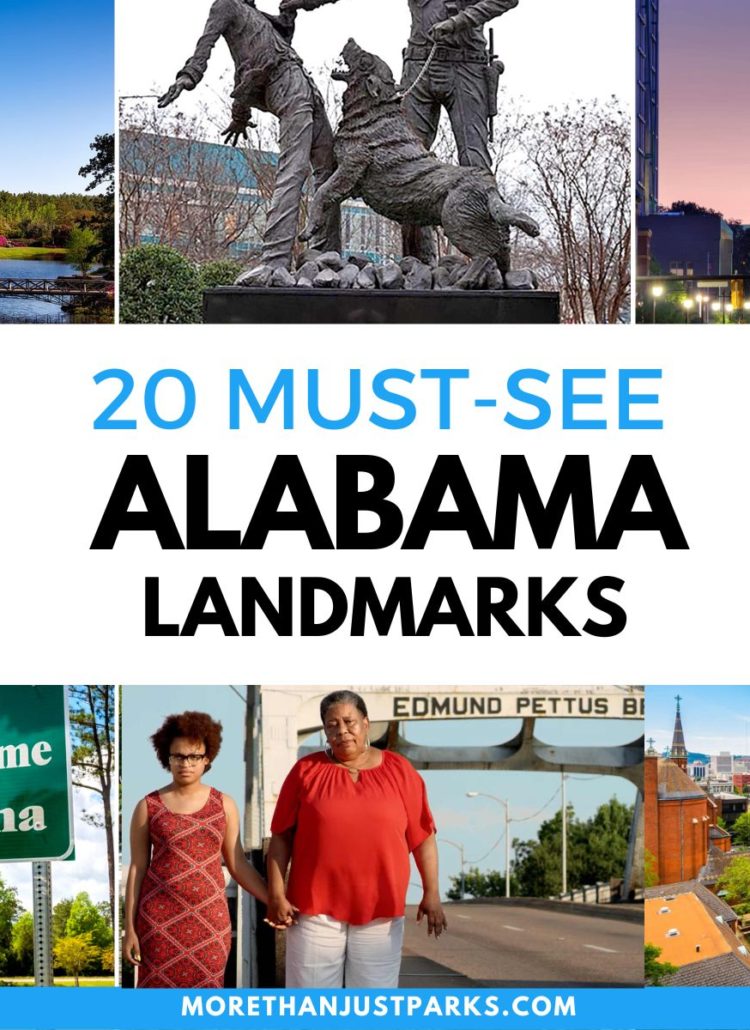



Leave a Reply